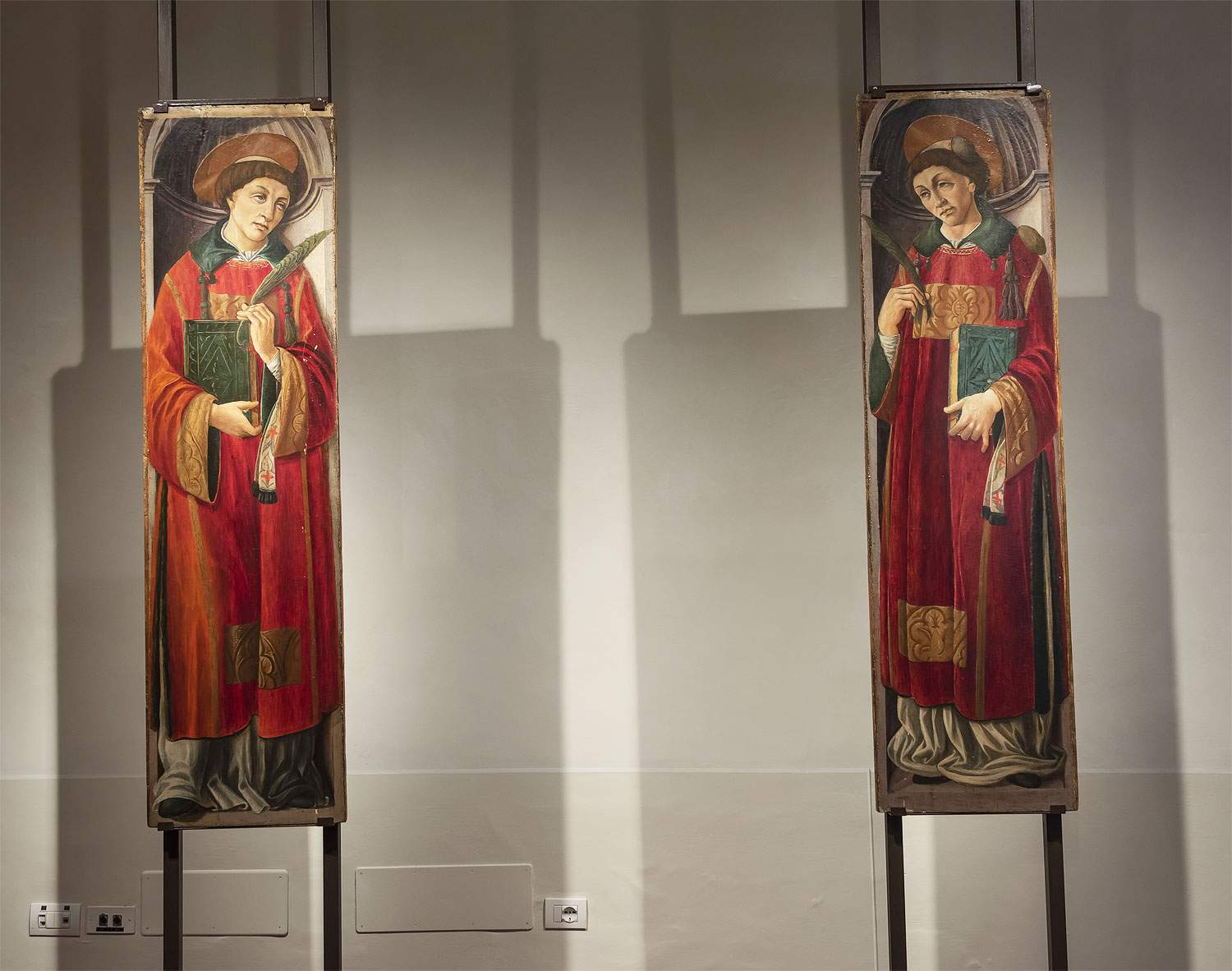The treasures of the Fondazione Cassa di Risparmio di Lucca will be unveiled to the public Oct. 2-31 in the rooms of the Sala dell’Affresco at the Complesso di San Micheletto (a venue never before used), with free admission. The exhibition, titled Beauty. Belonging. Identity. New ’pearls’ from the CRL Foundation Collection, is part of the national Invitation to the Palace circuit by which the headquarters of Banks and Banking Foundations open to the public. On display is a selection of works owned by the Foundation, proposes a thematic subdivision in a new context, which compose a journey through the centuries. In fact, the exhibition features three portraits, made by Girolamo Scaglia (Lucca, c. 1620 - 1686), Pompeo Batoni (Lucca, 1708 - Rome, 1787) and Luigi de Servi (Lucca, 1863 - 1945), works with religious subjects such as the lively Mary Magdalene by Antonio Franchi (Villa Basilica, 1638 - Florence, 1709) and the intense Judith again by Girolamo Scaglia, up to the very recent acquisition of two Cupids by Pietro Paolini (Lucca, 1603 - 1681). Then again Stefano Tofanelli (Lucca, 1752 - Rome, 1812), another work by De Servi, and the Saints Vincent and Stephen by Vincenzo Civitali (active from 1488 to 1519), the two latest acquisitions in order of time, which add to the Foundation’s already extensive collection.
The two saints were purchased in a Sotheby’s auction in New York, and are by Vincenzo di Bertone Civitali, nephew of the more famous Matteo Civitali (Lucca, 1436 - 1501), represented in the exhibition by his Madonan del latte. The two altarpieces were made around 1488 for an altarpiece in the Lucca church of San Frediano, later dismembered. Their attribution makes it possible to identify the first painting assigned with certainty to this author, and their history, amply illustrated in the exhibition layout, provides an opportunity to tell decidedly interesting stories about one of Lucca’s oldest churches. Indeed, the Augustinian friars of the church of San Frediano in Lucca had commissioned Matteo Civitali, a sculptor already famous at the time, and his nephew Vincenzo di Bertone Civitali to paint a hanging altar for the church’s nave. Matteo was given the task of decorating a statue depicting Saint Frediano, which already existed, while Vincenzo was asked for two panels to flank it with the figures of Saint Vincent and Saint Stephen and a lunette to be superimposed with Saint Lawrence in Glory. Indeed, the contract describes in detail the commissioning of these two “Levite saints,” that is, members of the Israelite tribe of Levi, from among whom temple ministers were chosen. The panels, in the idea of the commissioners, were to surround the statue of Saint Frediano renewed by the intervention of Matteo Civitali, all in a hanging altarolo embellished with gilded frames.
Vincenzo consistently conducts his own creation by proposing two figures that appear extremely similar, a requirement due to their role as compendiums of a central element, but differentiated by many details that embellish the panels, such as the position of the feet, the way of holding the book and the palm, up to a slight variation in the inclination of the gaze. In the sculptural solidity and plasticity of the two saints, one can recognize the apprenticeship that Vincenzo was completing with his uncle Matteo, but there are many suggestions borrowed from the Lucca environment of the second half of the 15th century: in particular the full-bodied yet sharp, almost luminous painting that leads to Baldassarre di Biagio, who was for Lucca an important conduit to the great innovations of humanistic Florence. Vincenzo di Bertone lived in fact in a context of transition, in which he always maintained his own originality, remaining faithful to a native line, following the example of his uncle, scarcely attracted by the manner of Ghirlandaio and Filippo Lippi that was making its way even in the Tuscan provinces.
“The Foundation’s collection,” recalled President Marcello Bertocchini, “is in fact a collection that is indeed private, but curated and increased in favor of the cultural enrichment of the entire community. Normally the national event ’Invitation to the Palace’ involves opening the venues to the public for only one day. We have decided to do more, creating an occasion of dissemination all focused on the art of Lucca through the centuries.”
The exhibition, with free and free admission, will remain open Oct. 2-31 on Saturdays and Sundays with hours 10 a.m.-1 p.m. and 2-7 p.m. A valid Green Pass certification must be presented at the entrance.
 |
| Lucca, on display for the first time Vincenzo Civitali's two plates from the CRL Foundation |
Warning: the translation into English of the original Italian article was created using automatic tools. We undertake to review all articles, but we do not guarantee the total absence of inaccuracies in the translation due to the program. You can find the original by clicking on the ITA button. If you find any mistake,please contact us.